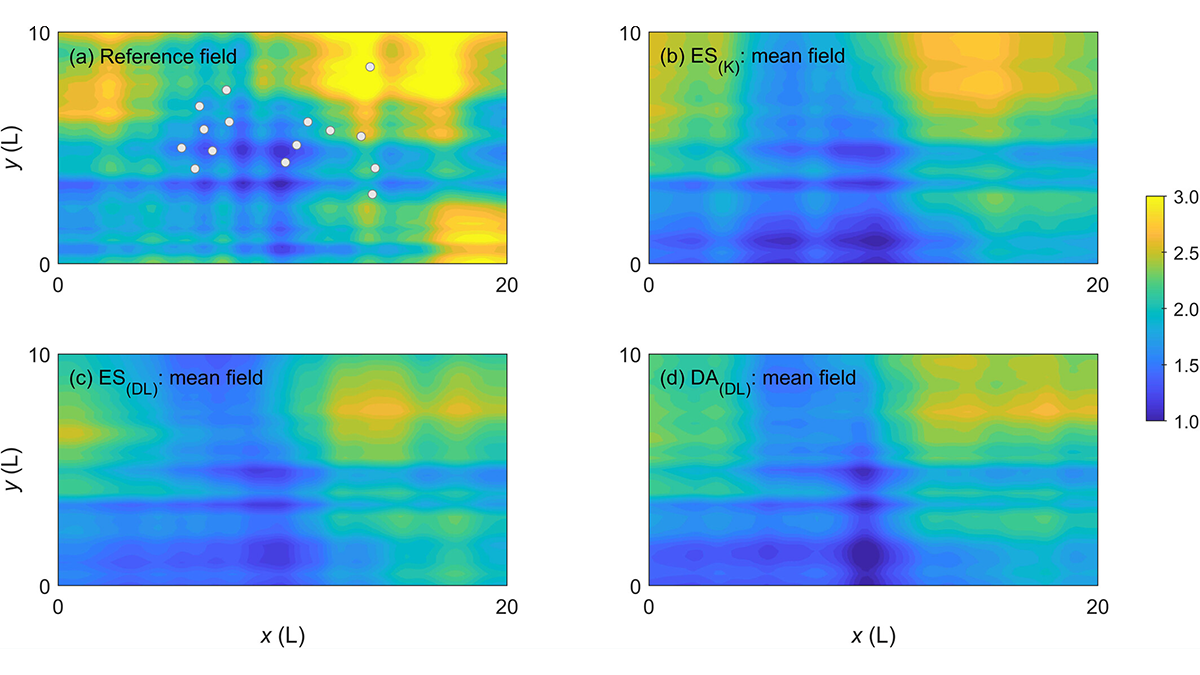Editors’ Highlights are summaries of recent papers by AGU’s journal editors.
Source: Water Resources Research
Kalman filtering, and its derivatives, is a popular method for merging models with observations via state and parameter updates. This is done through linear mapping based on linear statics and, most prominently, the Gaussian assumption. Because processes in the Earth sciences are generally non-linear and often non-Gaussian, the methodology frequently reaches its limits.
Zhang et al. [2024] propose a methodology in which the linear map is replaced by a non-linear map based on deep learning (DL). In addition, the methodology is advanced by adding predictors, a local updating procedure and data augmentation demonstrating the strong performance and versatility of DL. The proposed methodology is tested in numerical experiments related to groundwater flow and transport reconstructing complex hydraulic conductivity fields. Future studies will show the method’s usefulness in applications to real-world observations.
Citation: Zhang, J., Cao, C., Nan, T., Ju, L., Zhou, H., & Zeng, L. (2024). A novel deep learning approach for data assimilation of complex hydrological systems. Water Resources Research, 60, e2023WR035389. https://doi.org/10.1029/2023WR035389
—Stefan Kollet, Editor, Water Resources Research

